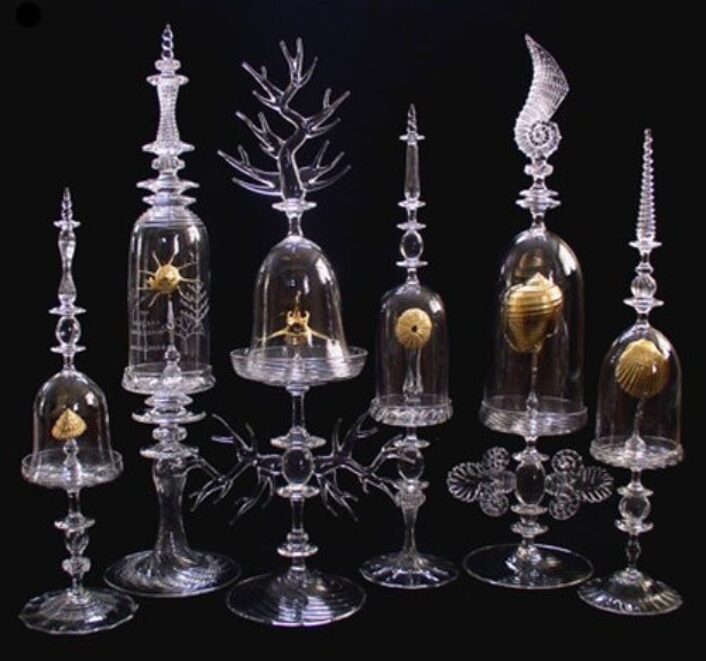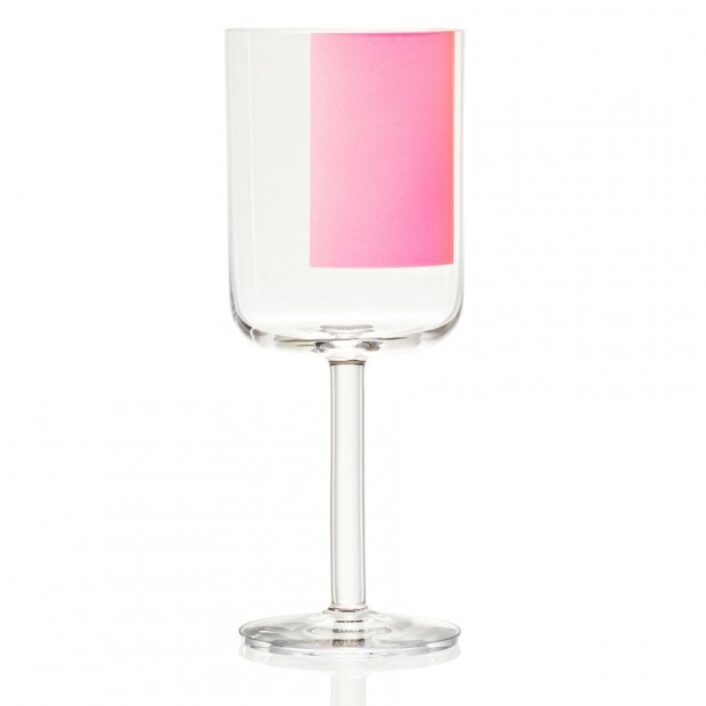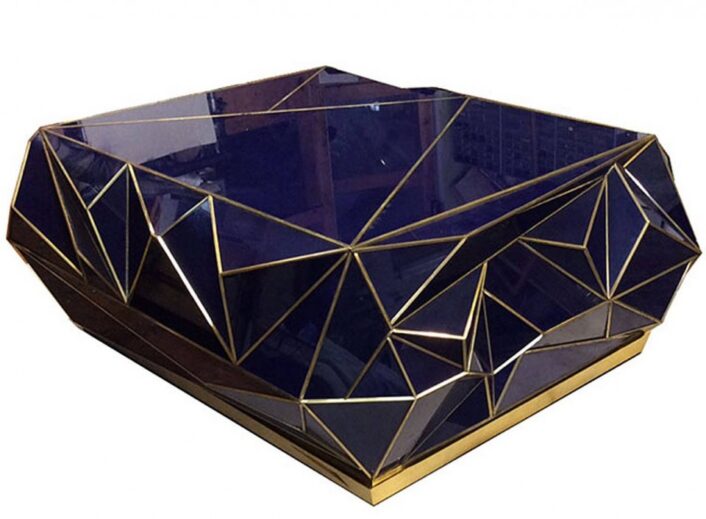Design
The Fluidity of Glass through Elinor Portnoy’s eyes

As a “tribute” to geology, Portnoy employs the technique of marbling with an assortment of colors; then, she cuts and polishes the glass to mimic natural crystallization designs. Image courtesy of Elinor Portnoy, photographed by Matan Ashkenazy.
Elinor Portnoy is a London-based designer who creates whimsical and colorful glass pieces… all while testing the fluidity of glass. At her joint residence between the Royal College of Art and the Corning Museum, she experimented with pouring hot glass over cast iron molds in order to showcase the natural progression the material undergoes during the hardening process.
Existing somewhere in the middle of art and design, her work has a unique quality that manages to display the movement of glass while staying true to it’s physical attributes.

Image courtesy of Elinor Portnoy, photographed by Matan Ashkenazy.
In today’s homes where rooms wind into rooms and kitchens essentially open spaces, it’s nice to display beautiful (and functional) objects.
Made from glass, these citrus squeezers mimic the fruit they are meant to serve in that they also “peel off” layers. The inner layer makes it lighter while the outer layer is skillfully sand-blasted for a better grip!
Portnoy was interested in being able to control all steps of the process… from creative design to the end product. Glass is unique in that its qualities allow to create while “shaping” the material to make it one’s own. Thus, it was obvious that Portnoy would easily veer from the industrial process she was previously involved with. Versus the classical art forms that she studied, glass allows Portnoy complete uniqueness and individuality… all qualities she’s craved!

These stunning sand dunes vessels are made of glass powder which Portnoy recycled. They are stunning and functional and unique… we love all three of those qualities. Image courtesy of Trendline, photographed by Matan Ashkenazy.
As natural resources decrease, Portnoy recycles to craft stylized pieces. Portnoy’s “portfolio” really increased once she finished her masters program at the Royal College of Art in London; because she wasn’t limited to a select group of tools and certain glass. Once she began her joint residency with Kohler and the Corning Museum of Glass, Portnoy could develop her own cast-iron molds (at the Kohler factory) and used them at Corning. Molten glass began to flow freely in a variety of colors… quite similar to lava flows you see in nature!

Image courtesy of Modern Magazine
Portnoy’s process at Corning, she credits, is due to the amazing facilities at her disposal. She melts pots of colored glass over her casted molds and lets the colors ooze out while creating their own space on the mold. As she progressed, Portnoy became more and more interested in the forms they created once the glass began to overflow the mold. Variations of the glass “puddles” that naturally overflowed the molds (and over each other) became a whole new project!

Image courtesy of Modern Magazine
As Portnoy transcends the fine line between discipline and accidental results, she says of her work, ““I will get interesting objects with various potential functions. These may play on the translucidity of glass and its optic possibilities. My objects straddle the fine balance between design and art, capturing the movement of the material in still objects, and aspiring to portray all the unique capabilities of glass.”
With her residency completed in 2017, we can’t wait to see what Portnoy has in store for us in the year ahead!


